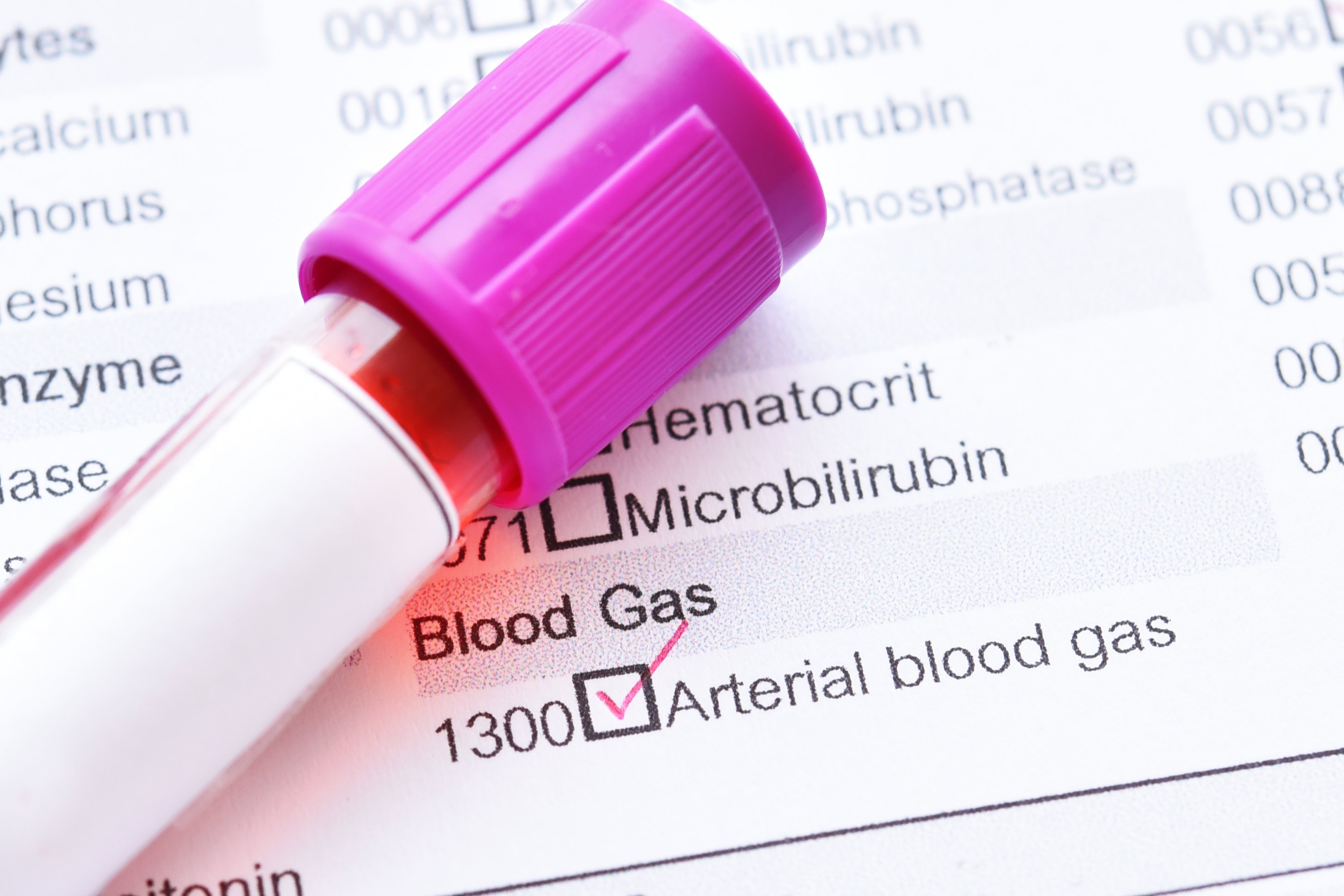
“Don’t worry, it’ll only sting a little.” For some patients, that’s easier said than done.
The arterial blood gases (ABG) test might mean momentary discomfort for some patients, but it’s a critical tool for doctors diagnosing a range of conditions, including lung and respiratory disorders.
Also known as an oxygen saturation test, this blood test measures the levels of oxygen (O2) and carbon dioxide (CO2) in the blood, as well as the blood’s pH (or acidity). It gives a precise measurement of how effective a patient’s lungs are at moving oxygen into - and carbon dioxide out of - the blood, hence the term ‘blood gas’ test.
The ABG test is one of the most precise and most common methods to measure how much oxygen your blood carries. It can be performed at most doctor’s offices or clinics. An ABG test allows physicians and health care staff to diagnose a variety of conditions, including lung and heart failure, shock and poisoning, and chronic conditions like diabetes.
However, ABG analysis is also used to assess lung functioning and to diagnose pulmonary conditions such as Chronic Obstructive Pulmonary Disease (COPD).
The science behind ABG testing
ABG testing measures how well your lungs can move oxygen and CO2 in and out of your blood before pumping it to the rest of your body.
Unlike a venous blood gas test, which tests CO2-rich blood flowing through the veins to the lungs and heart for CO2 levels, ABG tests analyze oxygen-rich blood flowing through arteries from the heart and lungs, giving the most accurate measure of the blood’s oxygen levels.
The ABG test measures several aspects of the blood’s makeup, including:
• pH – The lower the number, the more acidic your blood. A common indicator for various health conditions is whether the blood is acidic (below 7 pH) or alkaline (pH above 7). Acidic blood may indicate higher CO2 levels.
• Bicarbonate – This chemical stops the blood from becoming too acidic or alkaline.
• Oxygen – This measures the partial pressure, or amount of oxygen in the blood and determines how easily O2 passes from the lungs to the blood.
• Carbon dioxide – This measures the partial pressure, or volume of CO2 dissolved in the blood, as well as how easily this gas is removed from the blood.
Imbalances in your blood gas measurements can indicate the presence of different medical conditions. An imbalance in one area often means that the body is compensating for an issue in another.
Physicians and other health professionals are trained to interpret the complex matrix of measurements and provide accurate analysis and diagnosis, so it’s important that you speak with your doctor about how your test results should be interpreted.
What to expect
The entire test takes just a few minutes to complete, and results are usually available in less than an hour.
The test is usually completed by a respiratory therapist, nurse, or other trained healthcare staff member. After identifying an appropriate artery from which to draw blood, your clinician will sterilize the injection site before briefly inserting a thin needle.
ABG tests use blood, taken from an artery such as the wrist because this blood is the most oxygen-rich blood in the body. If you’re hospitalized and have a pre-existing arterial line, your health provider may choose to use this to draw blood for the test.
The healthcare staff will draw a small amount of blood from the artery – a small vial or about a teaspoon.
After removing the needle, your physician or care provider will apply pressure, then a bandage. Analysis of the blood sample analysis happens via a portable device or lab. Results are usually available during the same visit.
If you are on oxygen therapy, your doctor may ask you to turn off your oxygen about 20 minutes before your test. Please confirm when booking your appointment and bring your oxygen to your appointment.
Talk to your doctor
Although blood tests make some patients wince, ABG testing is considered safe and a low-risk procedure. This test plays a key role in helping your doctor diagnose your health condition and provide the correct treatment.
Talk to your doctor if you have questions or concerns about ABG testing or think ABG testing could be right for you.